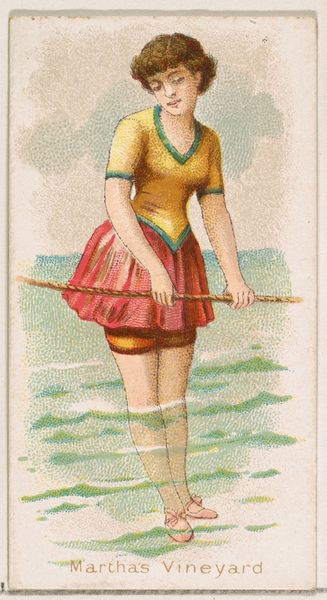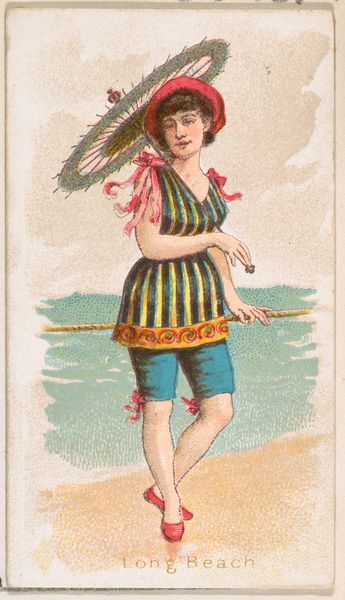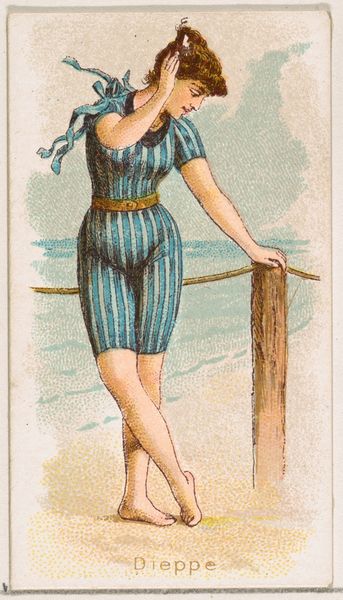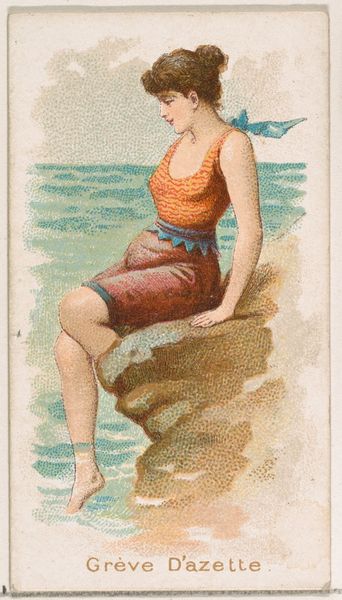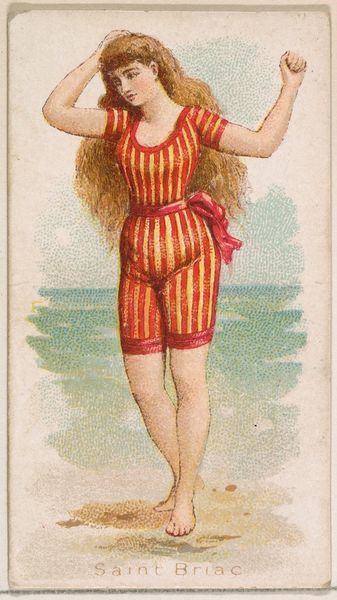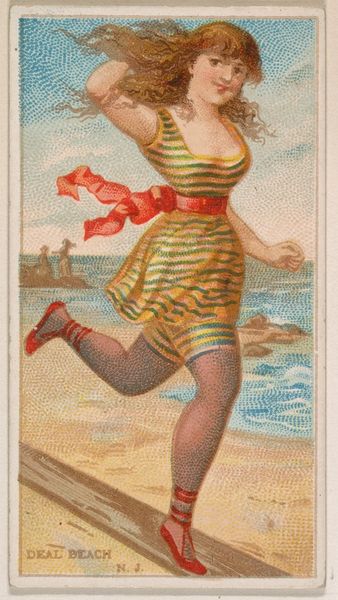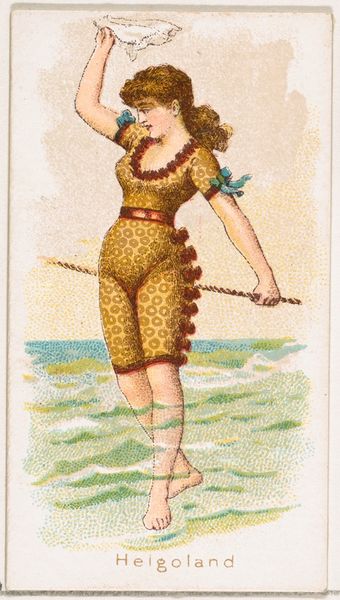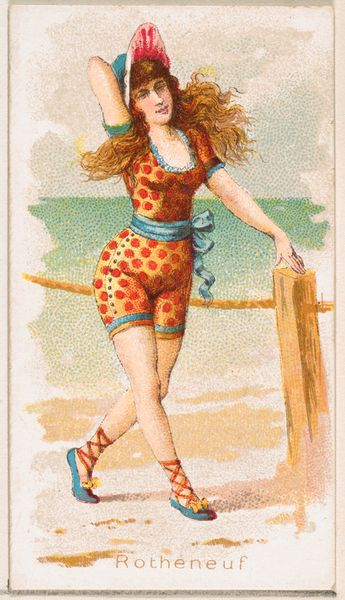
Cape May, from the Fancy Bathers series (N187) issued by Wm. S. Kimball & Co. 1889
0:00
0:00
drawing, coloured-pencil, print
#
portrait
#
drawing
#
coloured-pencil
# print
#
impressionism
#
caricature
#
figuration
#
coloured pencil
#
genre-painting
Dimensions: Sheet: 2 11/16 × 1 1/2 in. (6.9 × 3.8 cm)
Copyright: Public Domain
Curator: This is "Cape May, from the Fancy Bathers series," a coloured-pencil print created around 1889 by Wm. S. Kimball & Co. It’s currently held here at the Metropolitan Museum of Art. Editor: It’s immediately striking – there’s a sense of breezy leisure. The palette is so gentle and the pose so relaxed, it really speaks to a particular kind of Gilded Age beach aesthetic. Curator: Absolutely, but let's consider the broader context. These cards were included in cigarette packs, meant for male consumption. How do we reconcile this image of feminine leisure with the dynamics of a patriarchal society? Editor: Good point. On the one hand, it’s promotional material; on the other, we can still consider the craftsmanship, particularly the application of color pencils in mass production to achieve such delicate shades. What does the labour involved tell us about print culture at that time? Curator: It shows how burgeoning industries leveraged changing social attitudes regarding leisure and femininity. What is the material cost of this kind of fleeting popular imagery? Who made the paper, prepared the inks, distributed the prints? The card object embodies these hidden histories. Editor: The swimsuit also hints at a shifting culture, where women increasingly had a public presence. How are these images shaping perceptions and consumer behaviours for leisure time? Curator: And how are those behaviours reinforcing existing power structures? This image isn’t simply decorative; it actively participates in the construction of identity, of a fashionable ideal presented for consumption, much like the cigarettes it accompanied. Editor: But in terms of its legacy as art, mass production does democratise image availability, shifting ideas about visual representation and challenging previous notions of value in terms of artistry and craftsmanship. Curator: Which circles us back to production chains – the democratising aspect of printed material becomes problematic when you scrutinise the cost for all those who are actually engaged in this sort of mass-manufacturing activity. Editor: True. Seeing the piece, you think "beach holiday". Looking deeper, though, there's far more beneath the surface of its composition and construction.
Comments
No comments
Be the first to comment and join the conversation on the ultimate creative platform.

